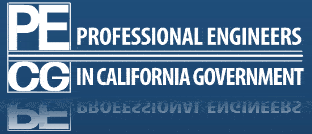A public-private partnership for a transportation project means a public agency signs a contract with a private entity to provide financing, complete the design, and build a public project, such as a new or widened state highway. Sometimes, the private entity can also be responsible for maintenance and/or operations of a facility for some years into the future. The private entity is typically compensated through either tolls or so-called “availability payments” from the public agency.
Although historically more typical in buildings and other infrastructure, P3s (as they are known) have encountered serious difficulties in California and elsewhere for transportation projects.
The first such California project involved construction of Route 91 toll lanes for a ten mile section in Orange County. The design-build approach increased the cost from $57 million to $130 million. A non-compete clause in the lease agreement was intended to ensure that tolls would be adequate to pay for the increased cost as well as a return on investment and profit. As a result, the public agency was prohibited from improving transportation facilities elsewhere in the corridor to reduce congestion. Ultimately, the public agency bought the project back for $207 million and has been operating it successfully ever since.
The next P3 attempt was construction of the Route 125 toll road in San Diego County. Construction costs increased from $360 million to $843 million and use of the toll facility was less than projected. The private consortium for the project filed for bankruptcy, becoming the first public project to default on the federal government’s TIFIA loan program. Ultimately, SANDAG bought the project and it is now operating it successfully as part of the public roadway network in San Diego County.
California’s most recent P3 attempt was the Presidio Parkway project, which replaced a 1.6 mile section of Doyle Drive connecting the City of San Francisco to the Golden Gate Bridge. It started as a two-phase project, each consisting of four competitively bid construction contracts. Phase 1 was completed with some of the contracts being awarded 40% under the estimated cost during the economic recession.
However, in June 2009, the fully-funded $473 million Phase 2 of the project was halted before it began. Instead of continuing with the conventional and less-costly delivery design-bid-build method, the project was turned over to Golden Link Concessionaire as a P3 to complete and then maintain for 30 years. The P3 contract was signed by representatives of the Schwarzenegger Administration on January 3, 2011, just hours before Governor Jerry Brown took office, billion despite warnings from the nonpartisan Legislative Analyst that the public-private partnership was more costly.
The new single-source, no-bid agreement inflated the cost of the Presidio Parkway project to $1.1 billion, plus a $173 million payment for reaching a certain construction “milestone.” While the project was supposed to be built for a fixed price, the developer sued the state and ultimately received more than $100 million extra from settlements. The impact will be felt for years, as $1 billion from state transportation funds will go to pay the private investors for the next three decades.
Contact PECG
(916) 446-0400
pecg@pecg.org
